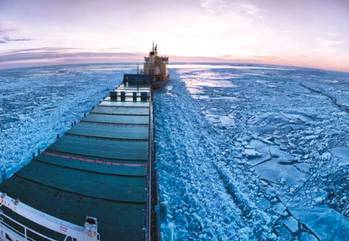The 35th Consultative Meeting of the Parties
of the London Convention 1972 and London Protocol have adopted
Guidelines for Assessment of Dredged Material.
Success came during the final day of the Meeting of the Parties at
the International Maritime Organization headquarters in London last
week. These Guidelines are to be used for assessment of dredged material that is proposed to be placed at sea to ensure that the placement does not result in unacceptable adverse impacts to the ecological resources of the sea or present an unacceptable risk to humans.
The World Organisation of Dredging Associations (WODA) has an official Non-Governmental Observer (NGO) status at the London Convention and its Protocol. On behalf of the three dredging associations making up WODA; the Central Dredging Association (CEDA), the Eastern Dredging Association (EADA), and the Western Dredging Association (WEDA), CEDA undertakes this work and actively participates in meetings and relevant working groups to provide independent expert advice to help shape policy development. CEDA’s overarching aim is to ensure that any legislation pertaining to dredging and disposal activities and maritime construction works is based on the sound technical and scientific knowledge, takes account of best practice, and is ultimately workable.
CEDA, along with a number of other organisations, has worked to ensure that dredged material is treated as a special case and has been instrumental in changing the image of dredged material, recognising that it consists mainly of natural sediments and only a small proportion of the total volume dredged annually is contaminated. As a result what was previously described as dredged ‘spoil’ is now known as dredged ‘material’, a term now embedded in the conventions.
The London Convention and Protocol are important in setting basic requirements for the management of dredged material placement at sea and produce guidelines which provide the context within which assessment of the suitability of dredged material placement is carried out within contracting countries.
The London Convention and Protocol adopted the Dredged Material Assessment Framework (DMAF) in 1995, this was replaced by the Specific Guidelines for the Assessment of Dredged Material in 2000. The new Guidelines represent a comprehensive review to update the Guidelines with new science and to provide them in a user friendly format.
Through its observer status, WODA/CEDA contributed significantly to drawing up the original assessment frameworks and guidelines and has continued to provide expert input into their revision.
Before a permit for placement of dredged material at sea can be issued, an assessment must be conducted, including evaluation of alternatives to ocean placement and characterization of the dredged material in terms of physical, chemical, and potential biological toxicity. The Guidelines require that the characteristics of the dredged material be compared to an action list to determine acceptability for open water placement in the ocean, which is followed by careful considerations of placement site characteristics and an assessment of the potential effects of placement at that site. A permit is only to be issued if any effects are below acceptable thresholds. The Guidelines specify that monitoring programs should be put in place to ensure that permit conditions and predictions of acceptable impacts are on target.
Dr. Craig Vogt (Craig Vogt Inc, USA), Chairman of the WEDA Environment Commission represented WODA/CEDA at the recent Consultative Meeting.
The Guidelines apply to the 90 countries that are members of the London Convention and 43 countries that are members of the London Protocol (a number of countries are members of both). The Guidelines will be available on the IMO website soon at www.imo.org as well as on the CEDA and WEDA websites, www.dredging.org and www.westerndredging.org respectively.
Post to be found at:
http://www.maritimejournal.com/news101/dredging/dredged-material-guidelines-adopted-by-imo



 ShareThis
ShareThis


